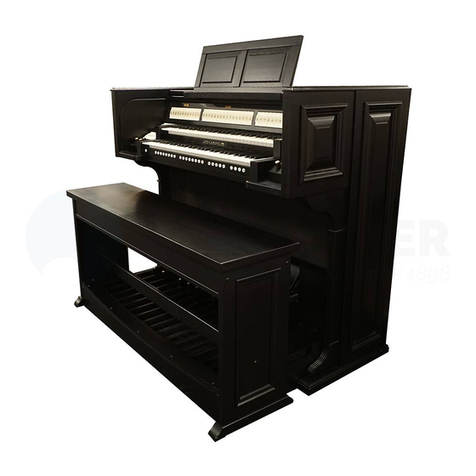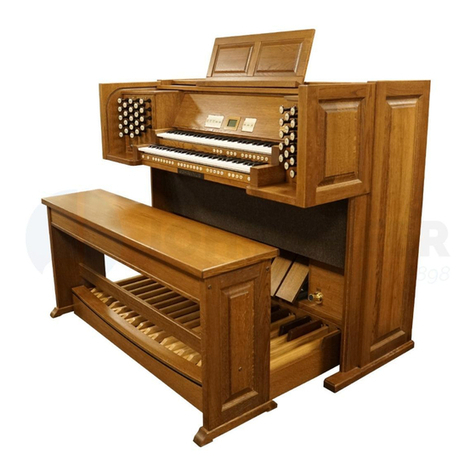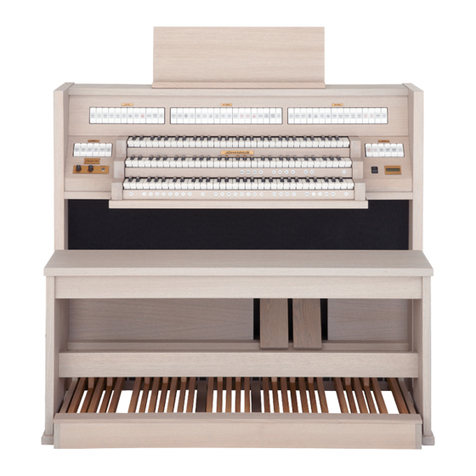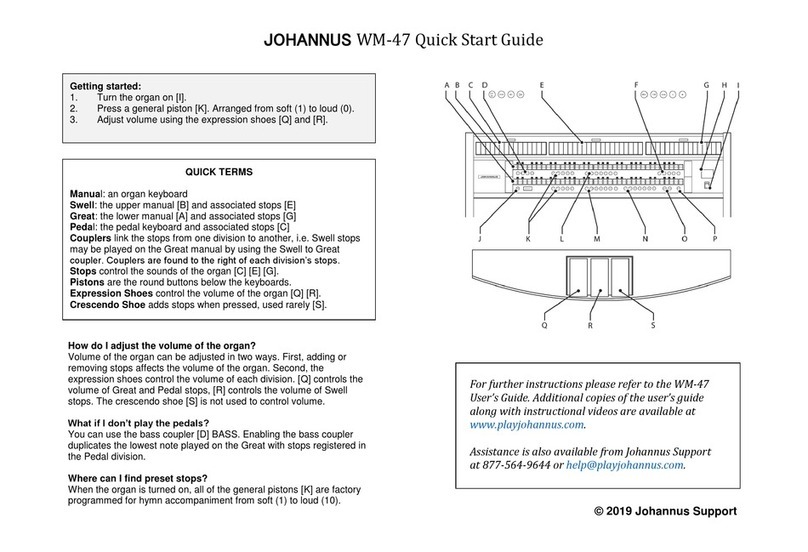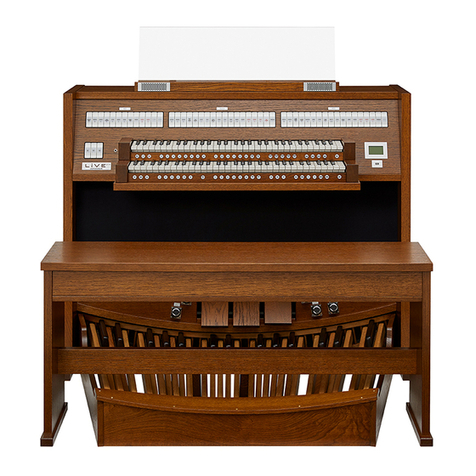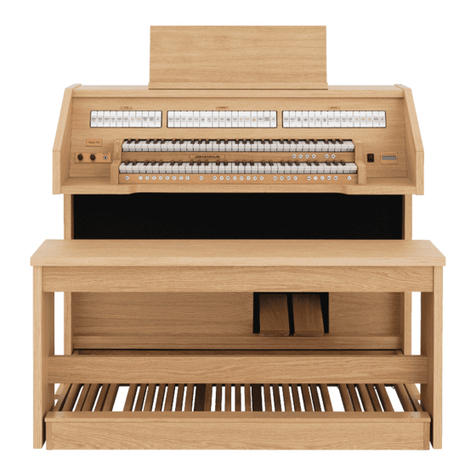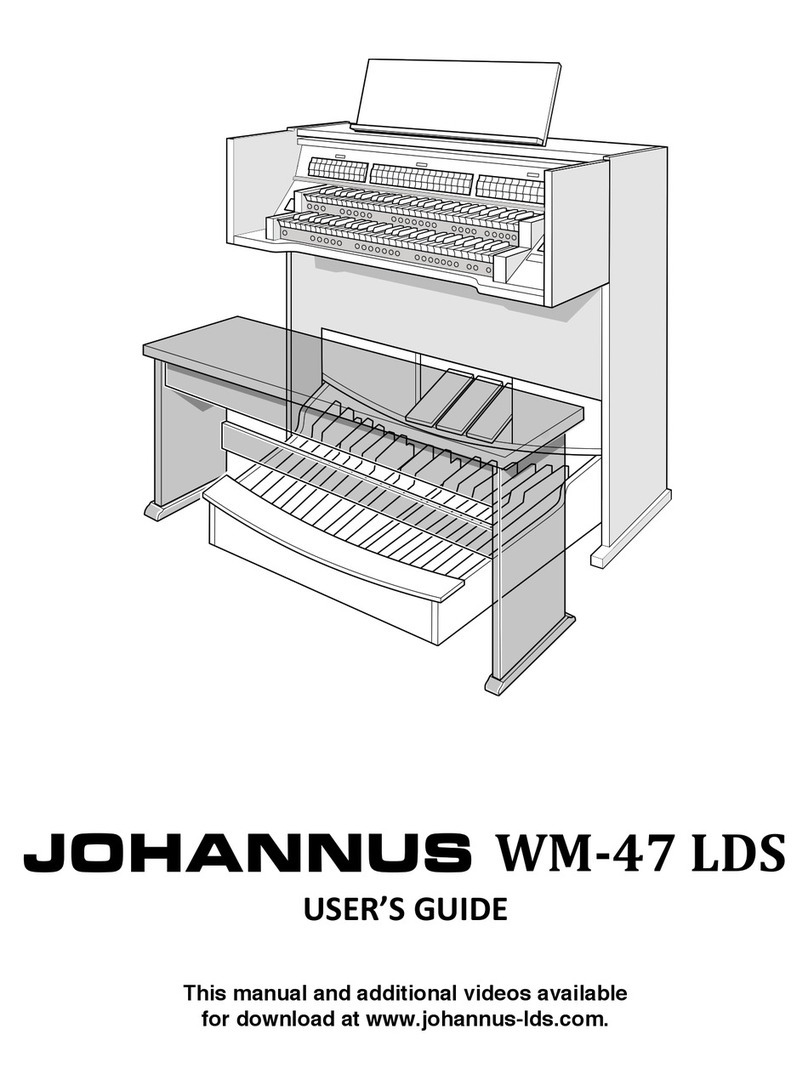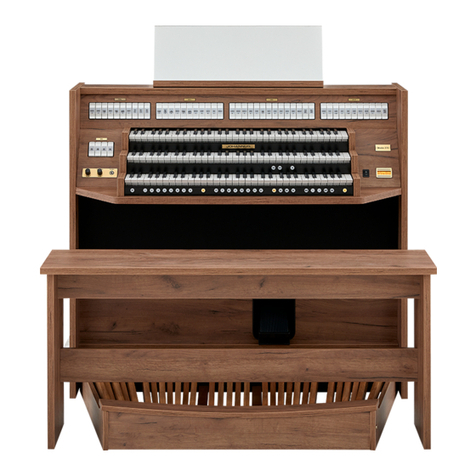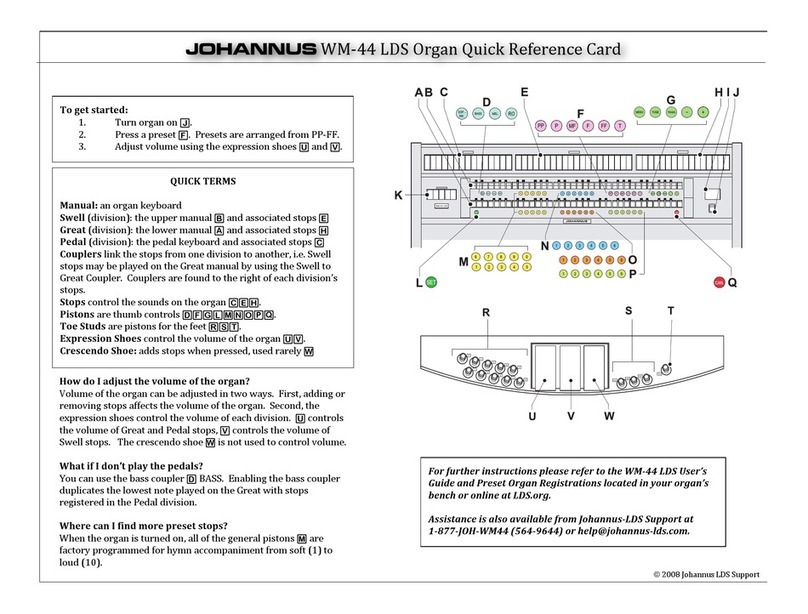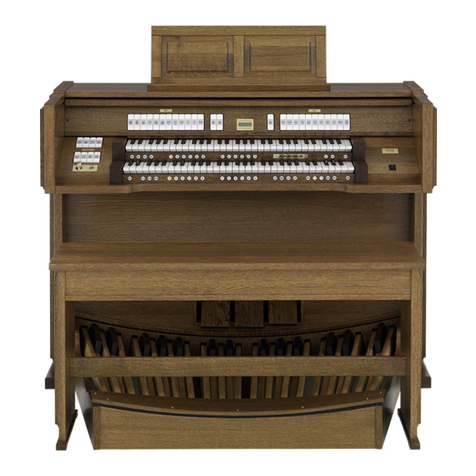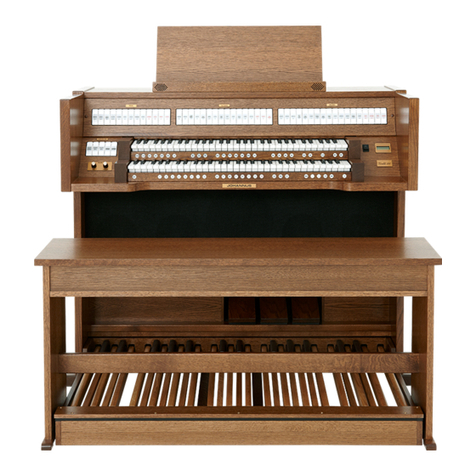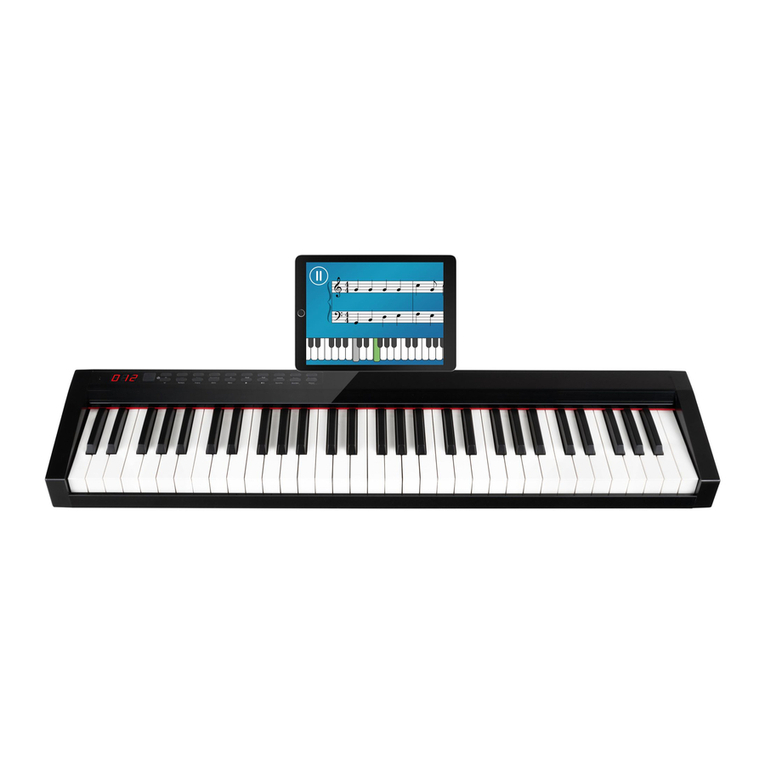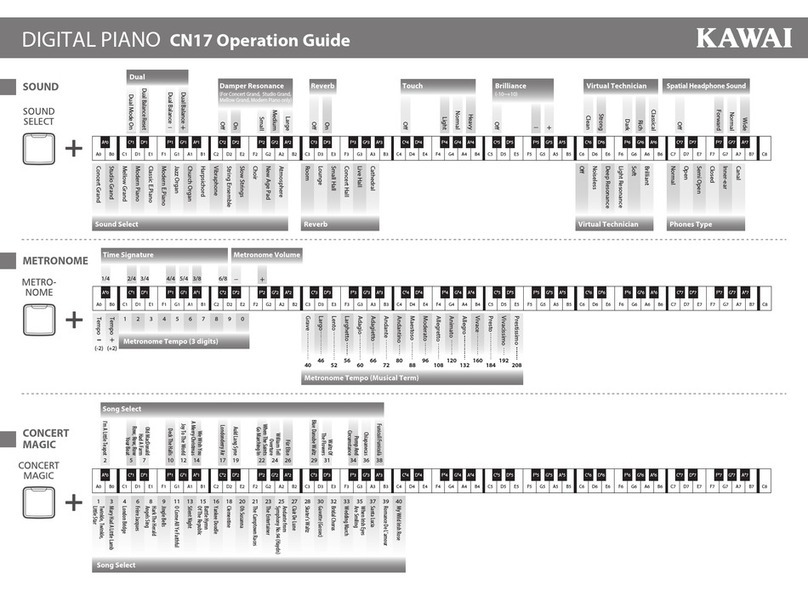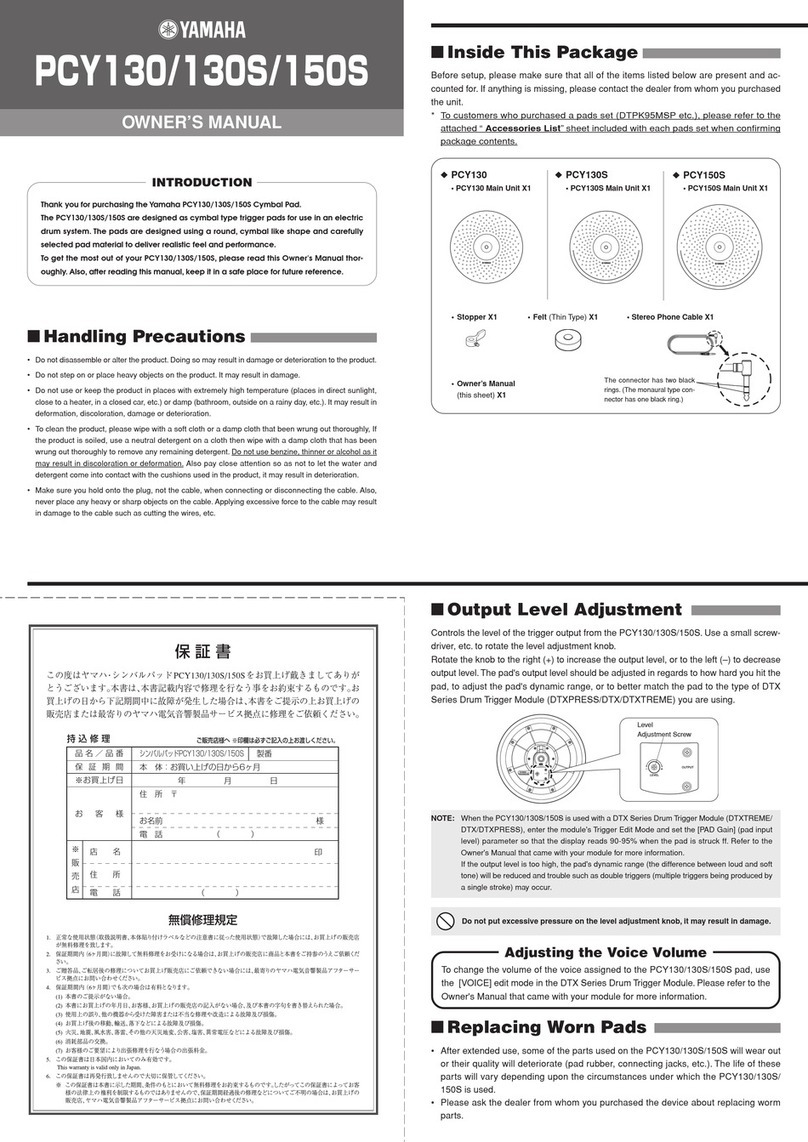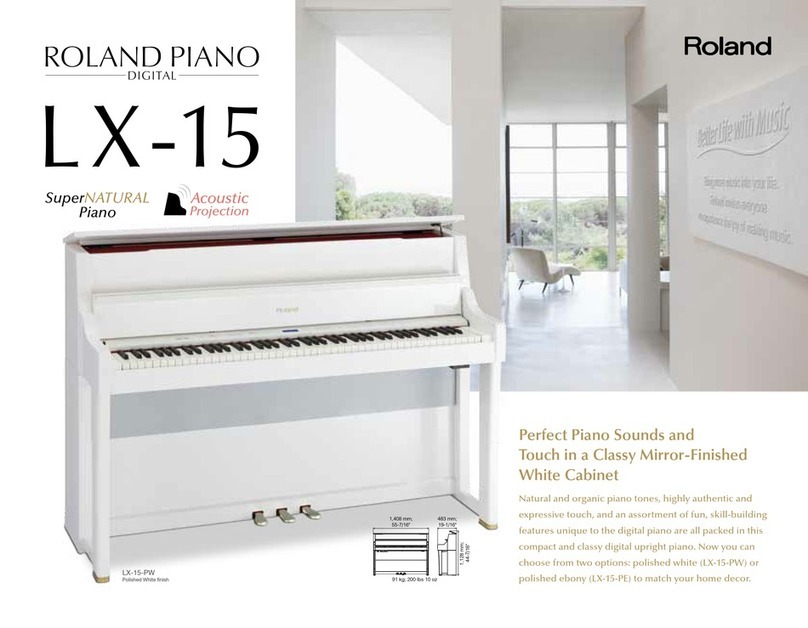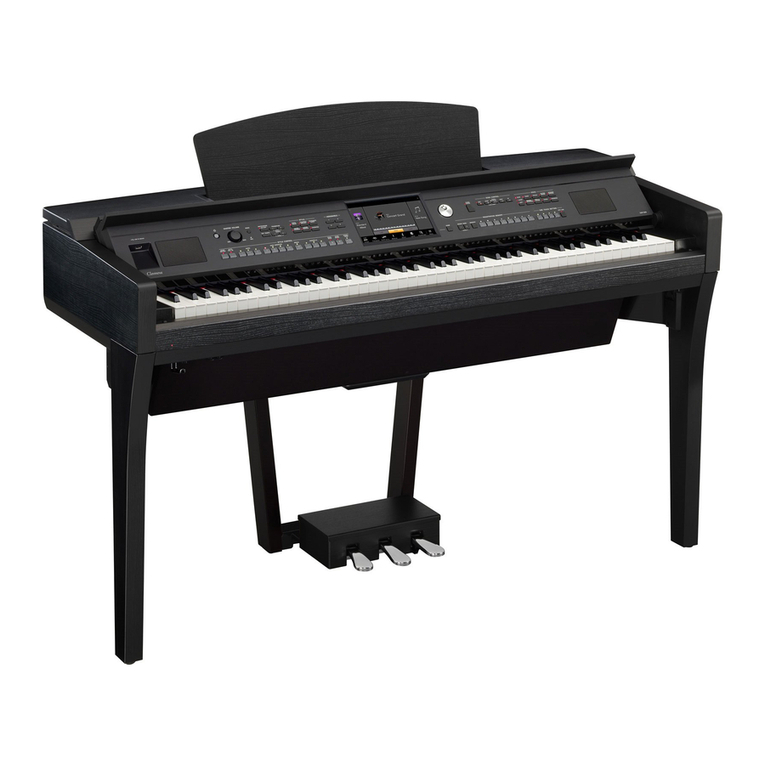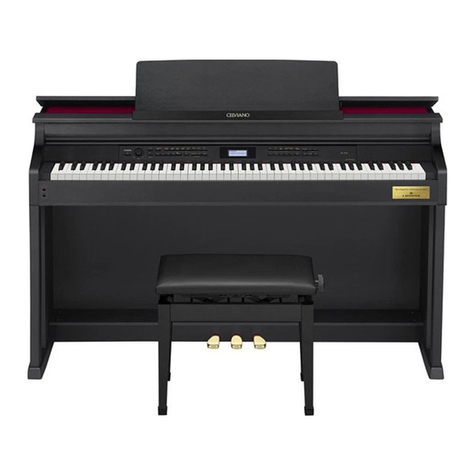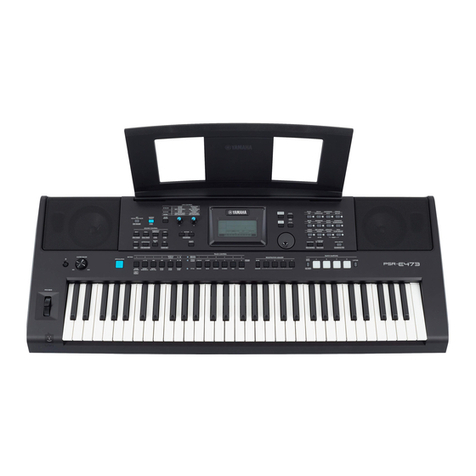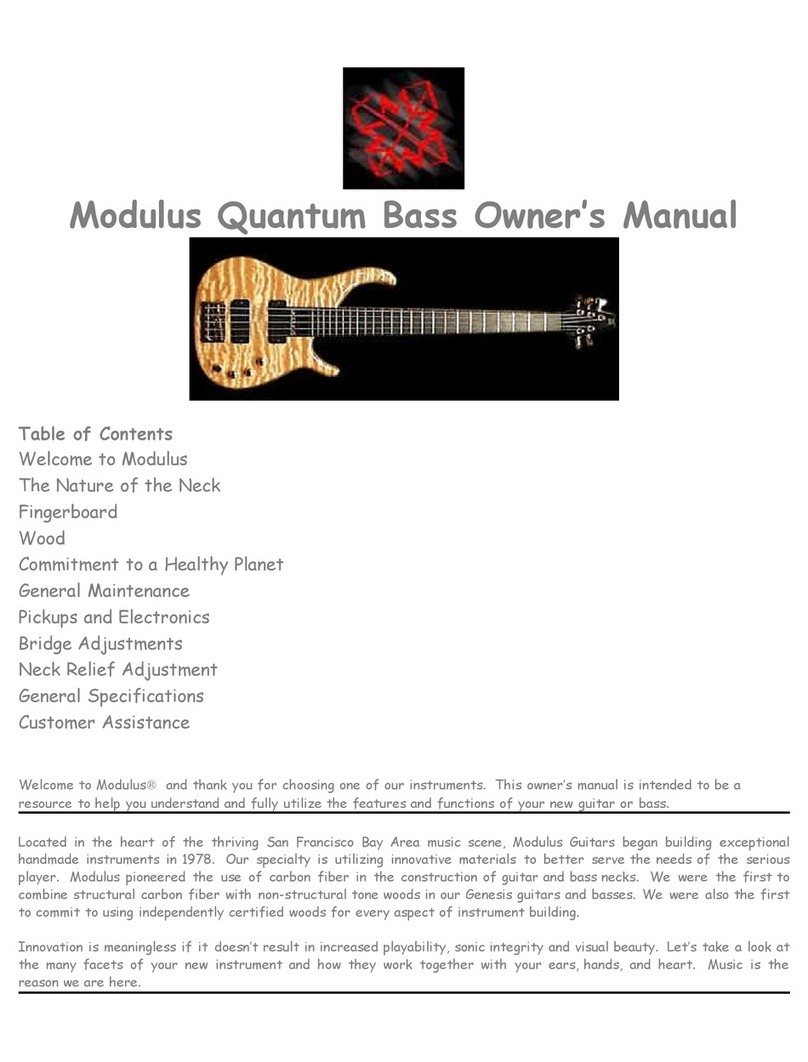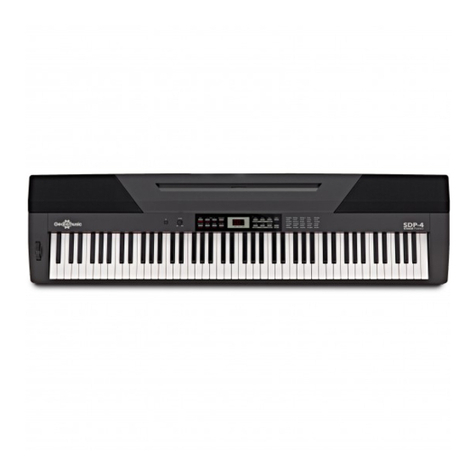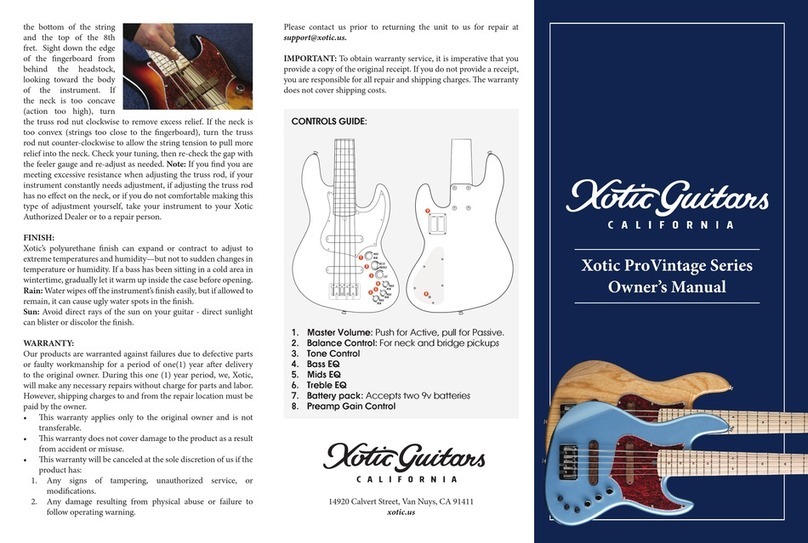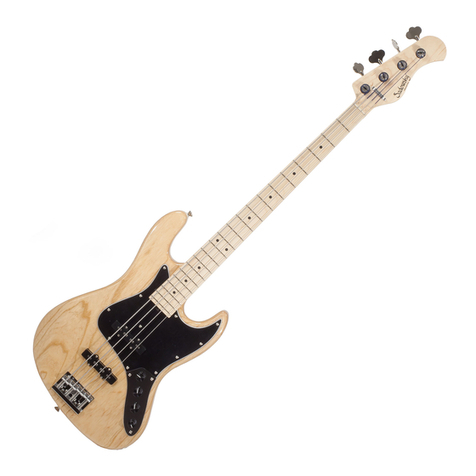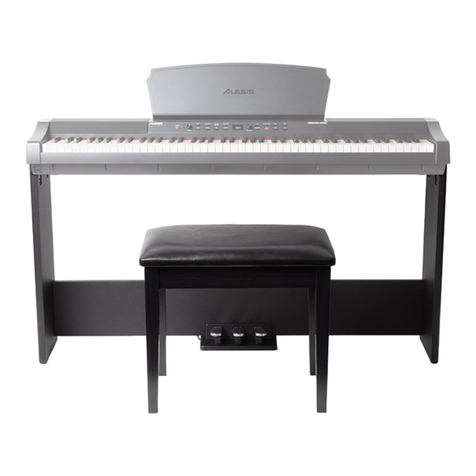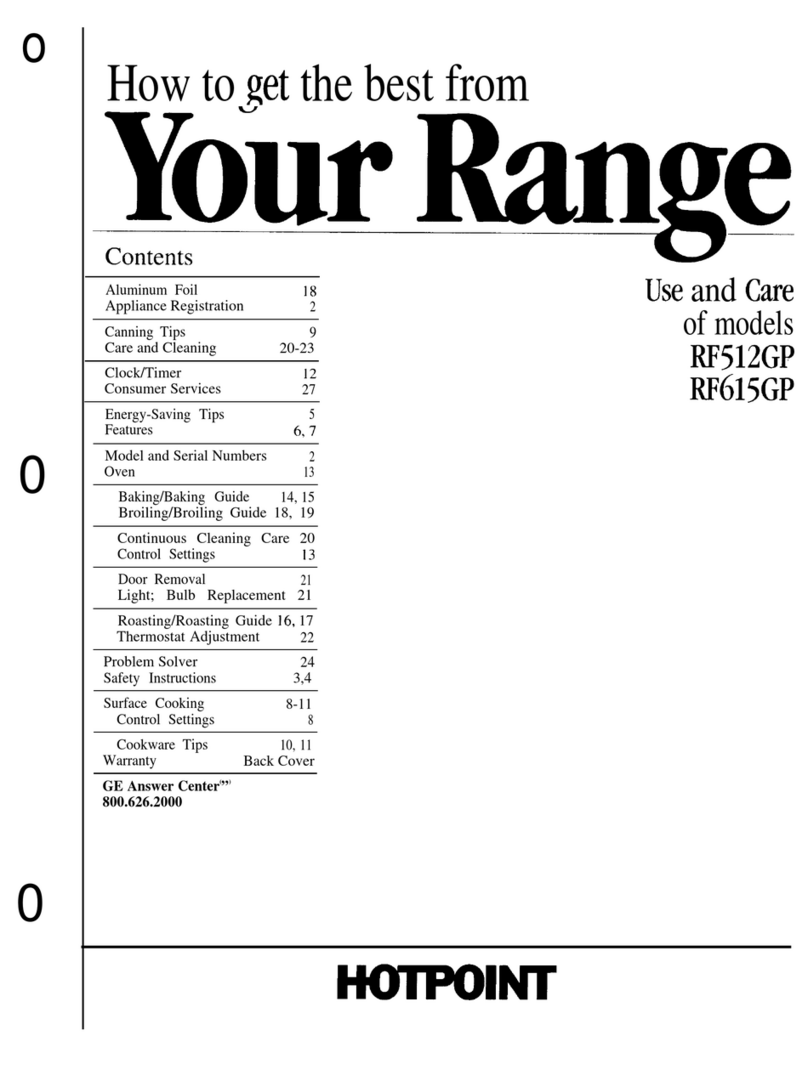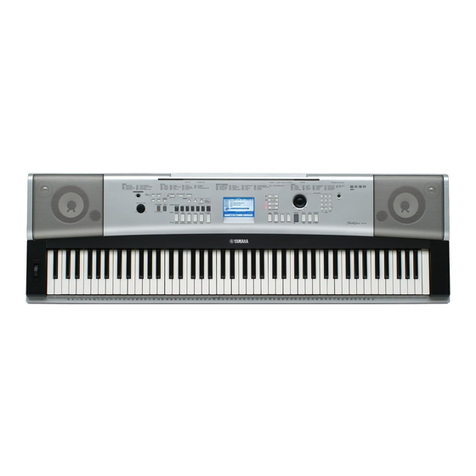
Pre-programmed memory locations
Pre-programmed memory locations are available through the operating buttons PP to T. These
six memory locations have factory settings (presets) appropriate for the quiet pianissimo to the
loud tutti.
Retrieve a pre-programmed memory location
Press a pre-programmed memory location (PP-T). The active stops light up.
Setzergeheugen
Met behulp van het setzergeheugen kan met één knop een registratie actief gemaakt worden.
De setzergeheugen bestaat uit acht niveaus. Elk niveau heeft acht geheugenplaatsen. Deze
niveaus zijn op de display te zien (Mem:..). De setzergeheugenplaatsen zijn leeg bij aanvang en
zelf te programmeren. Capture memory
Using the capture memory, a registration can be activated with one button. The capture
memory consists of eight levels. Each level has eight memory locations. These levels are
shown on the display (Mem:..). The capture memory locations are initially empty and for the
user to be programmed. Programme a capture memory location
The current setting of the capture memory location will be lost.
1. Select the required stops.
2. Select a level (1-32) on the display using the - and + buttons.
3. Press the SET button. Hold the button.
4. Press the required memory location (1-8).
5. Release the SET button.
Retrieve a capture memory location
1. Use the - and + buttons to select the required level (1-32) on the display.
2. Press the required memory location (1-8). The active stops light up.
Adaptive Surround Reverb
Adaptive Surround Reverb offers you the possibility of choosing your own acoustic
environment. You have a choice of no less than 12 uni- que reverbs, allowing you to choose a
different reverb for each style and
intonation. Your organ comes with the following standard settings:
Romantic Town Church
Symfonic Basilica
Baroque Palace Hall
Historic Hill Church
When changing style and/or intonation, the chosen style, intonation and reverb will be shown
briefly on the display. Volume
Turn the VOLUME knob to change the volume of the reverb.
Length
Turn the LENGTH knob to change the length of the reverb. The length can be set per reverb.
For each reverb the last setting is saved.
You can choose from 12 different reverbs. You can alter these per style and intonation.
1. Use the ROM, SYM, BAR (Style), SOLO and TRIO (intonation) knobs to activate the
style and intonation you wish to change the reverb for.
2. Press the MENU button.
3. Use the + and – buttons to obtain the desired reverb.
4. Push the SET button. The selected reverb has now been stored in memory. The ‘3D
Surround On/Off’ option will now appear on the display.
5. Use the + and – buttons to turn the 3D Surround on or off.
6. Press the SET knob. The selected 3D Surround setting has now been stored in memory
and will automatically appear in the main menu.
7. Press the MENU button to leave the Easy Menu.
External connections
The external connections are on the left under the console.
MIDI IN: This is an input for receiving MIDI codes from other devices.
MIDI MOD.: This is a programmable MIDI output for connecting a module or expander, for
example.
MIDI SEQ.: This is a non-programmable MIDI output for connecting a sequencer or PC (with
the optional Johannus Intonat program), for example.
AUX IN: This is a (stereo) input for playing the sound of an external device through the
amplifiers of the organ. For example, an expander connected to the organ through the MIDI
MOD. can be played through the instrument's loudspeakers.
AUX OUT: This is an output for connecting an external (stereo) amplifier.
EXT. REV.: This is an output for connecting Johannus external acoustics. This is a system that
imitates the spatial effect of a concert hall or cathedral.
PHONES: This connection for a (stereo) headphone is suited for a headphone with an
impedance of 30 Ω or more (see headphone specifications).
For further information see CD user manual.
© 2010 Johannus Orgelbouw b.v.

